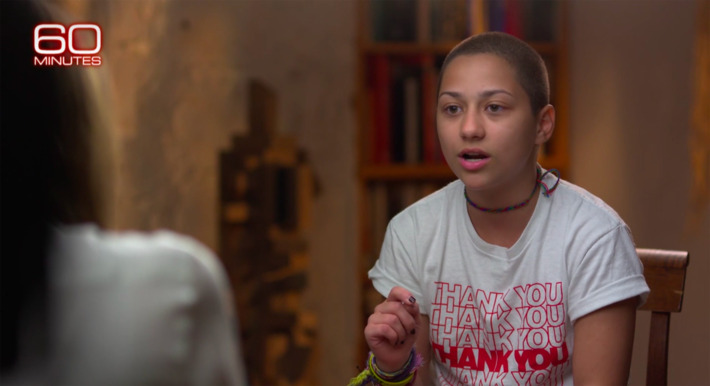Since the shooting at Marjory Stoneman Douglas high school in Parkland, Florida, a small group of activist students have shown remarkable media and public relations savvy in taking on powerful forces who oppose firearm limits. In just six weeks, they may have accomplished more to raise awareness and change public opinion on gun safety than many well-funded groups before them. Though it remains to be seen whether they will ultimately make change, the accomplishment is extraordinary.
Why have they been so successful?
In part, it’s because they’re well suited to the mission. The Atlantic notes that the Parkland students quickly raised $3.7 million for future events, calling them “precisely the type of self-confident, socially aware teens poised to change the gun-control debates across the nation.” Maybe it’s because Marjory Stoneman Douglas herself was a journalist and women’s suffrage advocate who was awarded the presidential medal of freedom, but, unlike many teens, these students at the school bearing her name are deeply engaged in the world around them.
Timing helps, too. The Trump presidency has galvanized many who hadn’t engaged in politics before the 2016 election, or who took the outcome for granted. The last group to tackle the gun safety issue in such a high-profile way were the parents of the children murdered at Sandy Hook Elementary School. They ultimately chose an “above-the-politics” path by focusing on spotting warning signs and prevention rather than more politically toxic solutions. It was a pragmatic and adult approach that took the power of the gun lobby into account. The Stoneman Douglas students, by contrast, are more quixotic and passionate in calling for legislative change. It’s like no one told them that it can’t be done.
A native grasp of PR, media, and visual storytelling
But the story here is not only about the right people at the right time. The Parkland students are also virtuosos of public relations and social media. They have used the media and the news cycle wisely and well.
They mastered the messaging
Immediately after the shooting, the students spoke out, using the national media focus on the tragedy to talk not just about their personal experience of terror, but to call for change. New York magazine recounts how survivor David Hogg came back to the school over his parents’ objections after finally making it home the day of the shooting. He flagged a Fox News crew and immediately offered an interview. “I don’t want this to be another mass shooting,” he said to the camera. “I don’t want this to be something that people forget.” Hogg has worked as a stringer for a local paper, and it showed. He and others who gave interviews in the aftermath were poised, articulate, and fearless in leveraging their moral authority as victims and survivors.
They’re authentic
The students agreed on broad steps toward change and specific words to articulate their goals, but their interviews were very raw and real. They reportedly rejected scripted sound bites in the days following the shooting and simply voiced their anger and grief toward the adults who had failed to protect all kids. “We call B.S.” was the rallying cry, and it promptly went viral.
They’re skilled at social media
From the time of the tragedy to today, the Parkland students have shown their adeptness with social media. The day after the shooting, Cameron Kasky came up with the hashtag #neveragain. He asked all on his social feeds to share and RT at exactly the same time: 3 p.m. on that Friday. The students’ mastery of Twitter is apparent in how they slap down criticism and rally support on the platform. Just ask Rick Santorum or Jack Kingston.
They understand visual impact
When 18-year-old Emma Gonzalez was asked by “60 Minutes” correspondent Sharyn Alfonsi why she broke through among the student activists, Emma’s response was, “It might’ve been my hair…. you know, just iconically you think of the picture and you think of a bald girl.” Now, personally, I think Emma Gonzalez is a lot more than just a buzz cut, but her response was revealing. This is the Instagram generation, and they have an instinctive understanding of the power of strong visuals. Emma looked like a warrior-heroine, and the public responded.
They identified the “enemy”
Some gun-safety groups have tried not to antagonize the NRA, but the Parkland students have been brutal in targeting the organization and its allies in Congress. The identification of a clear antagonist pits the young, idealistic students against a heavily funded and well established lobbying group, making them the David to the NRA’s Goliath. It’s a classic storytelling strategy and one that works particularly well when NRA advocates criticize the students as too immature or self-indulgent. (A better PR strategy for the NRA would be to try to partner with the student movement or at least show a willingness to listen, but that seems to have been abandoned after the CNN town hall.)
They know how to keep the story alive
The most challenging thing about a major news story like the Parkland tragedy is that it eventually settles down. But the students knew the press would want fresh faces to interview, so they organized a deep bench of media-savvy students and actually split them up among the media according to message and personality. Most importantly, they began planning media-oriented events that would bring a fresh take on the story for journalists and news crews. First came the White House meeting, followed by the CNN town hall. Then the students organized a 17-minute school walkout on March 14th. It all culminated in the March For Our Lives on the 24th, which offered a compelling visual resulting in saturation coverage. A professional PR and social media team couldn’t have planned it better.

